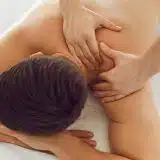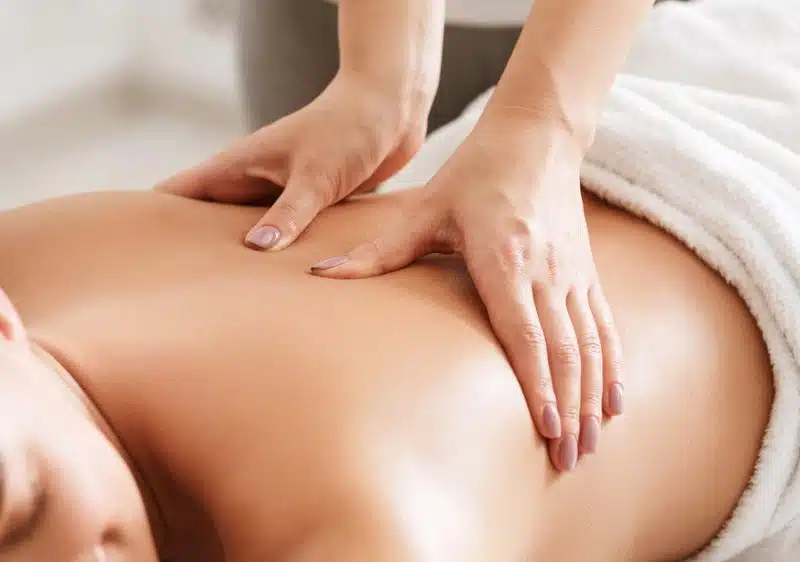Effleurage is a French term that translates to ‘light touch‘. It’s a primary technique used in various massage types, often serving as an icebreaker, letting clients get accustomed to touch.
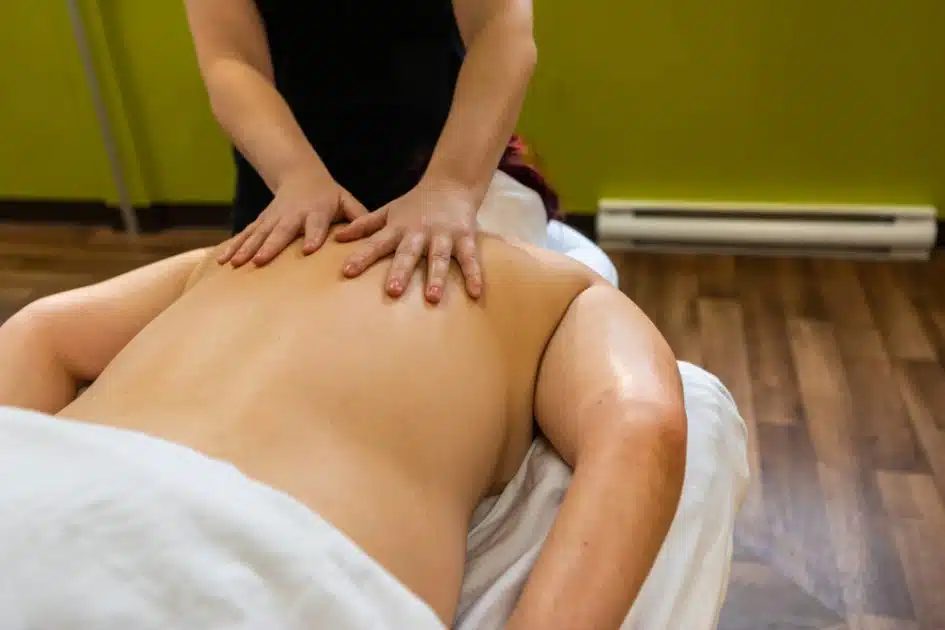
Effleurage is like the gentle start to a massage session. It involves smooth, long strokes with a flat hand or fingers to get that lymphatic system flowing better.
It’s typically performed using the palms over the skin, targeting superficial structures like the skin, primarily at the start and finish of a massage.
Who Can Effleurage Massage Help?
Effleurage, a key part of many massage techniques, is usually used at the start and end of massages. This positioning aims to help you relax and feel good. Effleurage’s gentle touch is great for many situations:
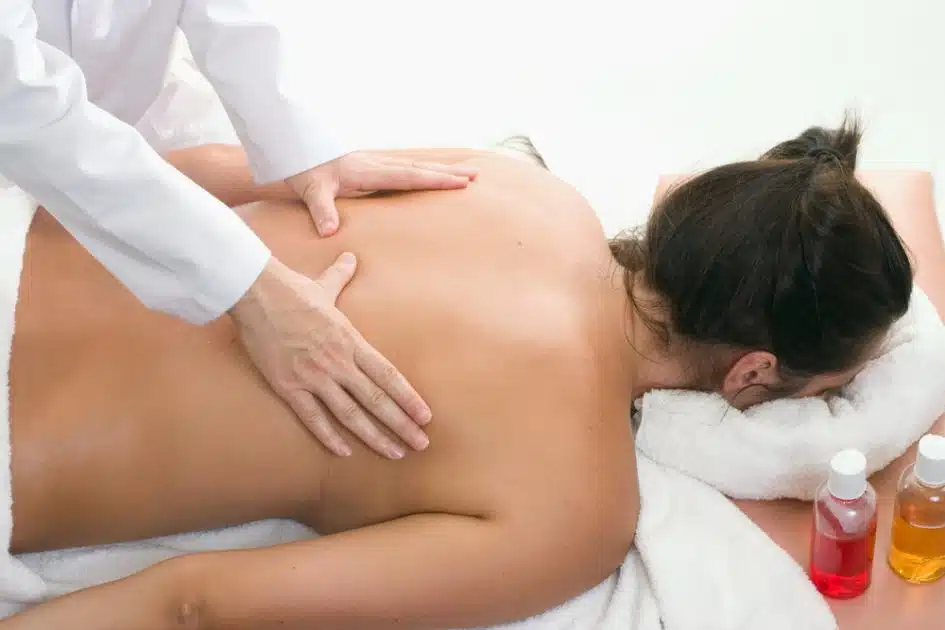
- Athletes across the spectrum
Effleurage isn’t just for elite athletes. People at any level can benefit from this technique, whether you’re hitting the gym casually or competing professionally.
- Individuals engaged in sedentary jobs
Folks spending lots of time sitting at desks or driving may battle muscle stiffness and back pain. Effleurage, with its soothing strokes, can ease these discomforts and boost body movement.
- Pre- and post-workout sessions
After your workout, effleurage aids muscle relaxation, accelerates recovery, and lessens muscle soreness chances.
- Pre- and post-event
Whether it’s a significant sports event or a strenuous physical activity, effleurage can help prepare the body for the challenge ahead and later aid in quicker recovery.
- People living with chronic pain
Effleurage can be a soothing respite for those grappling with chronic pain. It helps alleviate muscle tension, enhance circulation, and consequently, mitigate pain.
- Seekers of relaxation
In our busy lives, stress and tension often take a toll on our mental and physical health. Effleurage, with its gentle and rhythmic strokes, can induce relaxation and tranquility, helping to combat stress.
- Individuals suffering from tight muscles
A sedentary lifestyle, stress, and certain physical activities often lead to muscle tightness. Effleurage helps to loosen tight muscles, thereby enhancing mobility and reducing discomfort.
- Cases of Delayed Onset Muscle Soreness (DOMS)
DOMS commonly happens after a tough workout, particularly if the body isn’t used to it. Effleurage can help alleviate symptoms of DOMS like muscle stiffness and soreness.
Effleurage serves a wide range of people by offering gentle strokes to help with relaxation, pain relief, and overall wellness.
Recommended:
Friction Massage
Benefits of Effleurage Massage
Effleurage Massage, known for its long, smooth strokes, offers various therapeutic benefits. Its popularity, especially at the beginning of a massage, stems from its ability to improve blood circulation and support the lymphatic system.
In more detail, below are some of the numerous benefits of effleurage:
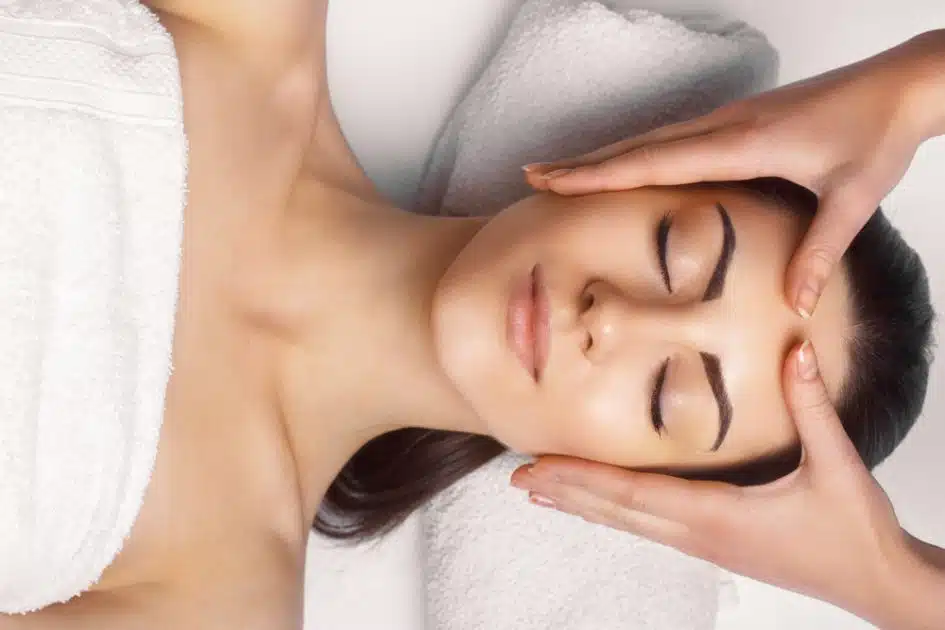
- Boosting Muscle Recovery
- Mitigating the Effects of DOMS and Fatigue
- Facilitating the Early Stages of the Healing Process
- Improving Blood Flow and Muscle Stimulation
- Instilling a Sense of Well-being and Relaxation
Effleurage Massage goes beyond being just a massage technique; it’s a holistic tool for enhancing physical and mental well-being. The many benefits show how important it is in therapeutic massage and health treatments.
How Does Effleurage Massage Work?
This Effleurage Massage, an important massage technique, basically ‘warms up’ the body’s tissues. It increases circulation and assists venous blood flow to the heart. The strokes are gently directed towards the heart to ensure this advantage.
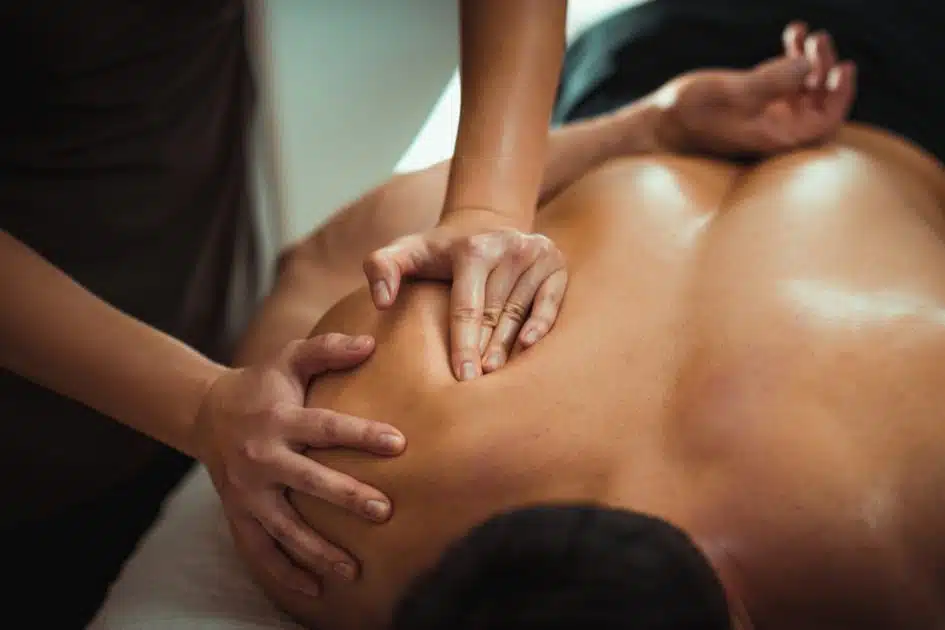
This technique is all about helping you chill and unwind, reducing stress and tension. It’s pretty neat how it can balance your neural systems to either calm you down or amp you up, depending on how you go about it.
Guide to the Uses of Effleurage
Effleurage Massage is a diverse and basic massage treatment technique with several advantages ranging from physiological improvements to enhancing emotional well-being.
Let us explore more into its numerous applications:
Boosting Blood Circulation
Therapists use Effleurage Massage to boost blood circulation. This process creates heat, expanding blood vessels and forming new tiny vessels for improved nutrient exchange, tissue rejuvenation, and enhanced cellular function.
Encouraging Lymphatic Drainage
The lymphatic system, a key part of our immune system, clears waste and maintains fluid balance. Unlike the blood system which relies on the heart, the lymphatic system lacks its own pump. Effleurage technique stimulates muscles to move lymph fluid through vessels. Gentle strokes guide fluid to lymph nodes, aiding waste removal and enhancing immune defenses.
Promotion of Relaxation
Effleurage does more than just its physiological stuff. This massage technique isn’t just about the body – it’s a mental chill pill too. The gentle strokes warm you up, tapping into the calming and digestive powers of the parasympathetic nervous system.
This system brings relaxation vibes when it kicks in. Effleurage also lets loose those feel-good endorphins and happy chemicals, dialing down tension and anxiety for an all-around good mood.
How Is Effleurage Performed?
Effleurage Massage, the MVP of massages, known for its smooth strokes hitting the right spots. It’s about adjusting pressure to fit each client’s needs. The therapist starts with oil or lotion for smoothness, then eases in with gentle strokes using palms and fingers.
As the session progresses, pressure increases, targeting deeper muscles while maintaining a soothing flow. The strokes boost circulation towards the heart and flush out toxins. A cool hand dance that combines body smarts with the power of touch to refresh, increase blood flow, and unlock more massage benefits. Demonstrating how a comforting touch can truly heal.
What Massage Types Use Effleurage?
Effleurage Massage is a fundamental technique widely incorporated in various types of massage therapies due to its versatility and numerous benefits. Here’s a more detailed look at how it is used in different types of massages:
1. Swedish Massage
This is the most common type of massage therapy and uses effleurage as one of its cornerstone techniques. Swedish massage therapists utilize long, warm up the muscular tissue, reduce tension, and gradually break up muscle knots or stuck tissues with flowing effleurage strokes.
2. Sports Massage
This is a specialized form of massage designed for athletes. Effleurage is typically used in the initial and final stages of a sports massage to stimulate blood flow, warm up the muscles, and help the athlete relax after intense physical activity.
3. Prenatal Massage
For expectant mothers, effleurage is particularly beneficial. It helps in relaxing the muscles, easing the discomfort associated with pregnancy, and improving circulation. The gentle nature of effleurage makes it a safe and effective choice for prenatal massages.
4. Deep Tissue Massage
While deep tissue massage is known for its firm pressure and focus on deeper layers of muscle and fascia, effleurage is used to prepare the muscles and ease into the deeper strokes comfortably.
5. Lymphatic Drainage Massage
Effleurage Massage is highly beneficial in promoting lymph flow due to its directionality toward the heart. This massage type aims to stimulate the lymphatic system and help remove waste and toxins from the body.
Effleurage Massage is a universally beneficial technique that aids in achieving the objectives of various types of massages, be it relaxation, recovery, or general wellness promotion.
Recommended:
Four Hands Massage
The Bottom Line
Effleurage Massage is like the OG in massage therapy, paving the way for chill vibes and healing. With its smooth strokes, it’s like a warm-up for your body, getting that blood and lymph flowing, and just making you feel good overall.
This technique is used in all sorts of massages, from Swedish to deep tissue, showing how important it is for recovery, tension relief, and healing. Whether you’re prepping for a big game or just need to relax, effleurage is there for you, bringing those calming vibes. It’s a key player in keeping us physically and emotionally well, as we dive deeper into how our bodies dig touch.
FAQs
What are the 5 basic strokes of Effleurage Massage?
Gliding, stroking, brushing, sliding, and sweeping.
What are 3 benefits of Effleurage Massage?
Enhances blood circulation, promotes relaxation, and aids muscle recovery.
What does Effleurage Massage mean?
Effleurage is a French term meaning “to skim” or “to touch lightly on”, and it refers to a series of massage strokes used to warm up the muscle tissue.
What are examples of Effleurage Massage?
Gliding over the back, sweeping motions on limbs, and light brushing strokes on the neck.
What is Effleurage Massage used for?
It’s used to increase blood flow, relax muscles, and as a foundation for deeper massage techniques.













